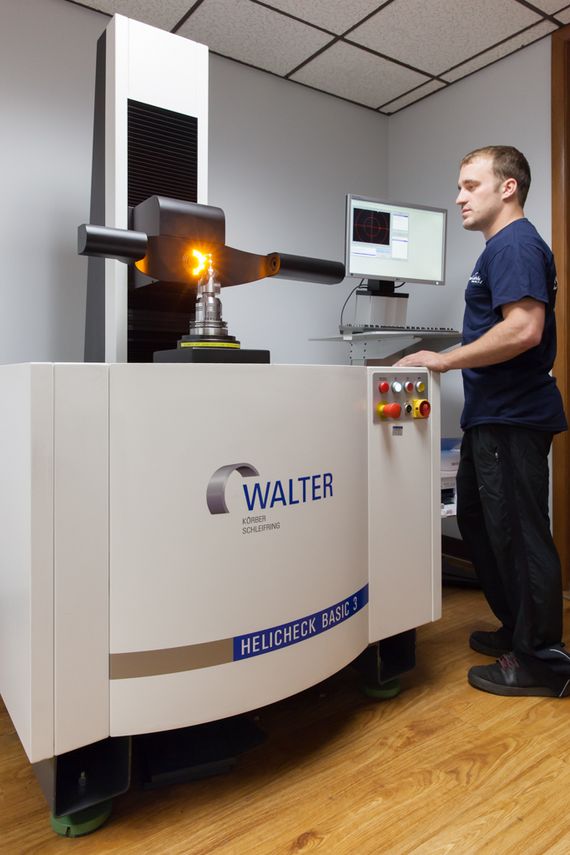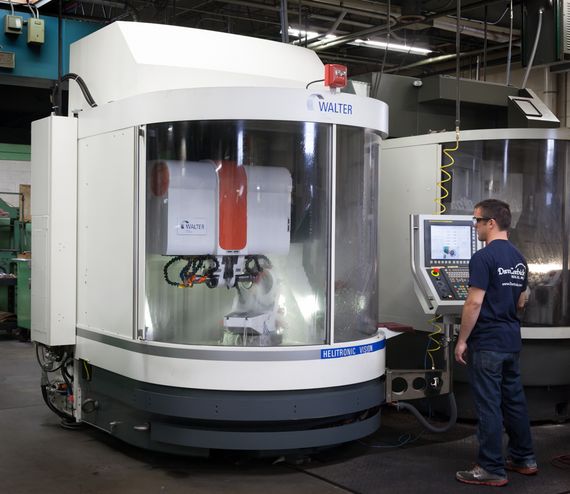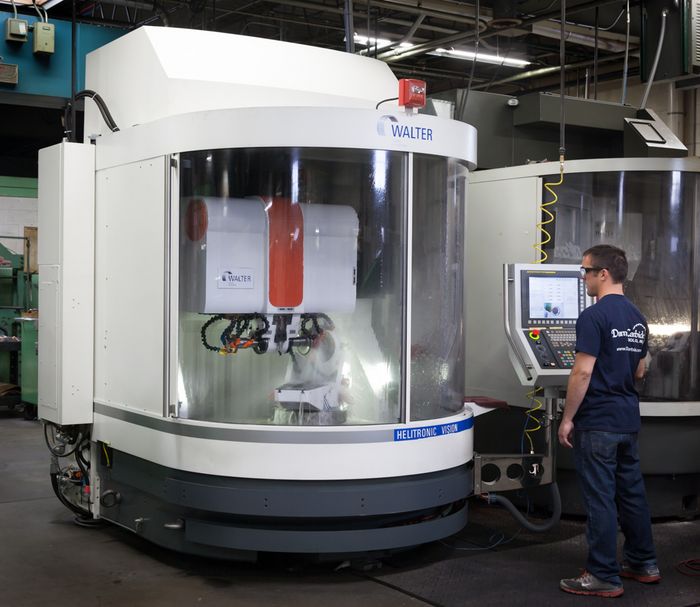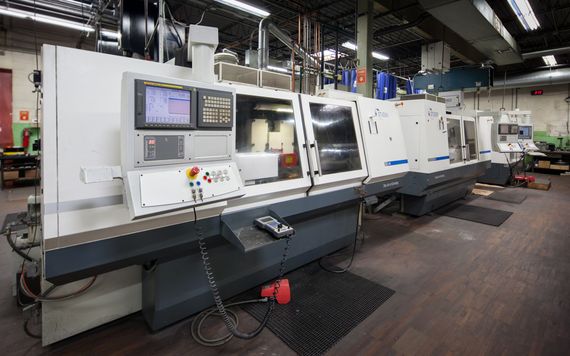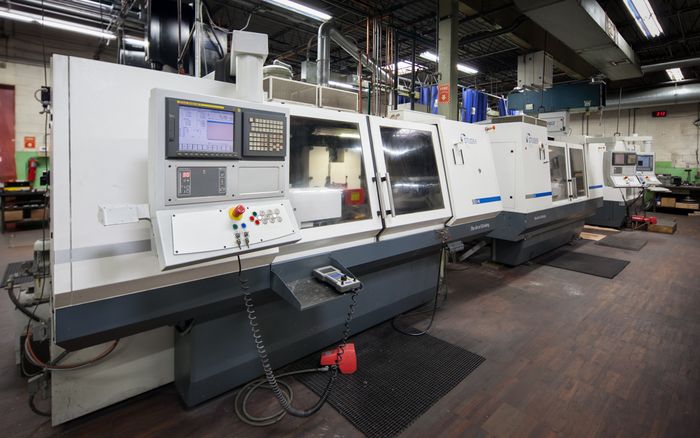Shop Propagates a Passion for Grinding
Damen Carbide Tool Co. Inc. in Wood Dale, Illinois, combines a passion for grinding excellence, vast amounts of experience and advanced CNC technology to create a culture that has allowed it to flourish for more than 65 years. The family-owned shop supplies standard and custom carbide cutting tools and wear parts, and its second-generation president John Bachmeier has been hanging around the shop since he was five years old.
Bachmeier first watched his father run the shop. Then he joined the company in 1979 and began to develop his own love and knowledge of grinding and Damen’s business niche. Now, Bachmeier is proud that a third generation of his family is working to keep alive the passion for grinding and producing quality carbide tooling and wear components.
Damen has a broad customer base, producing parts for electronics, medical, housing, oil & gas, mining, transportation, aerospace, military and medical applications, to name just a few. Whatever the industry, “basically everything we do is special – high-end, close-tolerance work,” explained Bachmeier. “The company started in 1948, and it has always been that way. It’s hard, but I grew up in it. That’s why I love it so much: it’s my life, my hobby. I’m just like my Dad – I like the intricacy and the accuracy, and I like seeing the technology advance.”
Advancements in grinding technology seem to be an especially potent driver of Bachmeier’s passion – and of the shop’s success. “When my Dad started, everything was manual,” he said. “But we bought our first CNC grinder in 1983, and we haven’t looked back.”
Since that first CNC machine purchase – a STUDER S40 capable of OD/ID grinding of parts up to 1,600 mm (63 inches) between centers – the shop has amassed an impressive collection of CNC grinders for cylindrical OD/ID, creepfeed, peel and surface grinding applications. All the machines have been brands now under the umbrella of United Grinding North America (Miamisburg, Ohio), and include STUDER, BLOHM and WALTER.
Damen’s first STUDER S40 featured all the bells and whistles, including wheel-indexing capability. The shop soon realized the machine’s flexibility and ease of programming, and it was quickly followed by two more S40s with the capacity to grind parts up to 1,000 mm (40 inches) between centers. Then came a STUDER S31 universal cylindrical grinder, followed by a STUDER S22 machine that was the first in the U.S. capable of peel grinding, Bachmeier said proudly.
Peel grinding uses a narrow wheel for efficient grinding of complex, small features in hard workpiece materials. The S22 can handle parts up to 800 mm (31.5 inches) between centers and features linear motor axis drives and a high-speed grinding option that allows circumferential speeds up to 140 m/s (460 fps).
Recently, two STUDER S33 OD/ID grinders joined the shop’s lineup. The universal cylindrical grinders sport a new control and wheelhead to enable grinding of complex workpiece geometries in single part clampings. The wheelhead features two motor spindles for external grinding and an internal grinding attachment.
The shop’s latest STUDER is a CT960 universal internal cylindrical grinding machine for ID and contour grinding. It is equipped with an interpolating B-axis that swivels to 91° and a four-spindle turret. The machine’s extreme versatility allows it to grind complex OD and ID geometries in single setups.
The common drivers of all Damen’s CNC grinding machine acquisitions are added production flexibility and processing capability. Bachmeier is constantly looking for ways to improve existing jobs and to enable the shop to go after a broader range of work.
“We look for new equipment that will allow us to handle jobs we couldn’t tackle before and to improve upon existing ones, to open up the field,” he explained. “Our newest United Grinding machine is going to open doors for ID grinding jobs that were tough to win with only jig grinding or EDM capabilities. You have to keep up with the technology and the quality. If we want to be the best grinding shop in the world, which we try to prove every day, we know we have to keep up with the latest technology advancements. We have to have the best, and right now the machines from United Grinding are proving they are the best.”
According to Bachmeier, Damen routinely performs ID grinding with tolerances of ±0.0001 inch. And along with its high-performance grinding equipment, the shop is temperature controlled to help achieve those tolerances. He added that an open tolerance at Damen is ±0.0002 inch.
Having United Grinding’s area distributor, Integrated Machinery Systems, in nearby Itasca, Illinois, also helps. “They work with us, and they’re in very close touch with STUDER,” Bachmeier explained. “We work with them on process development, and they provide expert application support.”
In addition to grinding, the shop has wire and sinker EDM, milling and turning capability. “But we’re probably 90 percent grinding,” Bachmeier said. “People come to us for grinding, not so much for machined parts. The biggest reason we do machining and turning is to make our own fixtures for grinding.”
Those fixtures are becoming more complicated along with the geometries Damen is grinding. But according to Bachmeier, complex fixturing is part of the art of grinding when a part has to be held without distorting it.
Although the shop does produce standard tools and wear parts from in-stock blanks, most of Damen’s work involves grinding of custom tools and wear parts. For custom parts, time from ordering of preforms to delivery is typically six to eight weeks.
“Deliveries on circular saws and knives, for instance, are faster, because we have more standard sizes of blanks,” Bachmeier said. “But most of the preforms for OD/ID and flat grinding have to be ordered. Basically, we have no standard items.”
Besides cutting tools, carbide components the shop produces include dies, bushings, molds and wear parts for oil & gas applications. Many require both OD and ID work, and Damen performs ID grinding on diameters from 0.0030 to 16 inches. And, a large majority of those parts have holes that are used as datums with very close tolerances, so an out of tolerance hole could lead to a scrapped part.
Damen’s emphasis on grinding carbide and other hard materials means the shop uses a lot of diamond grinding wheels, minimizing the need for wheel dressing. “The forms we need are usually on the wheel already, and of course the diamond doesn’t need dressing” Bachmeier said.
The shop’s passion for implementing the latest technology also extends to quality assurance. Damen uses a variety of in-process and post-process gauging equipment, including WALTER Helicheck machines and high-end coordinate measuring machines, to maintain its customers’ tight dimensional and surface finish requirements.
As for automation, Damen has yet to try the automatic loading/unloading capability that’s available for its CNC grinders. The shop’s variable lot sizes – from one piece to hundreds – and many custom jobs limit the utility of automation for those functions.
“We’ve got about 120 machines and 30 employees,” said Bachmeier. “Some guys run three or four machines, or even more. Once a job is programmed, our CNC machines run the entire cycle needed to produce a part instead of running single operations. And the operators know that once they push the button a part will run, for example, for 45 minutes. So they can go work on other jobs.”
Business at Damen has steadily grown over the past couple of years, and Bachmeier attributes a large portion of that continued success to a deep knowledge of the grinding process that comes from his own experience as well as that of other senior seasoned employees. At the same time, Bachmeier sees the adoption of new technology as a key to the current and future success of the shop.
“My sister, Rita Olvera, vice-president of Damen and I both have all our sons working here,” he said. “They’re comfortable with computers and programming. CNC has actually kept them interested. The software and graphics of our grinders really make a difference in that regard. If you look at how the programming software has evolved from the ‘90s to now, the difference is amazing. The current graphics and 3D capability almost makes it look live.”
While the latest grinding technology may provide the spark, what really fuels Bachmeier’s passion for his work is knowing that the parts Damen produces play critical roles in their final applications. “It’s a joy to find out what your product does out in the world,” he concluded.




